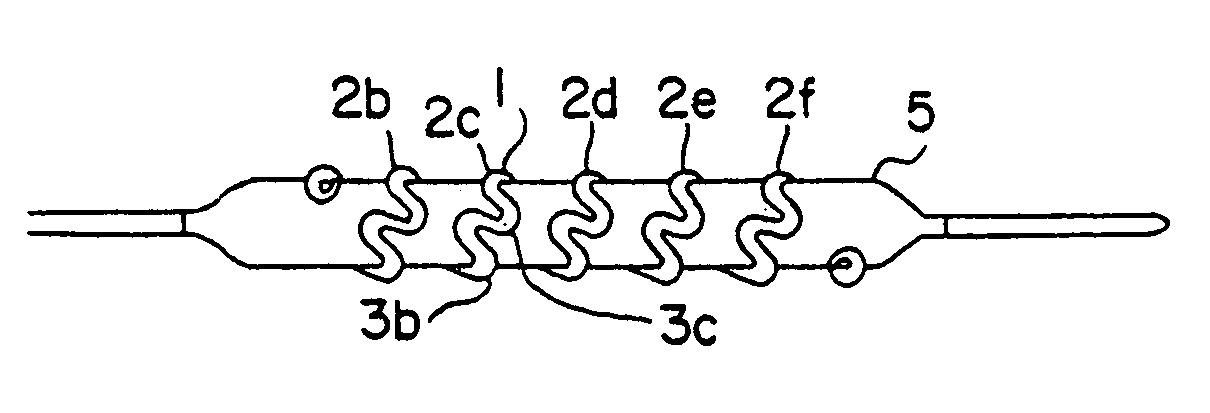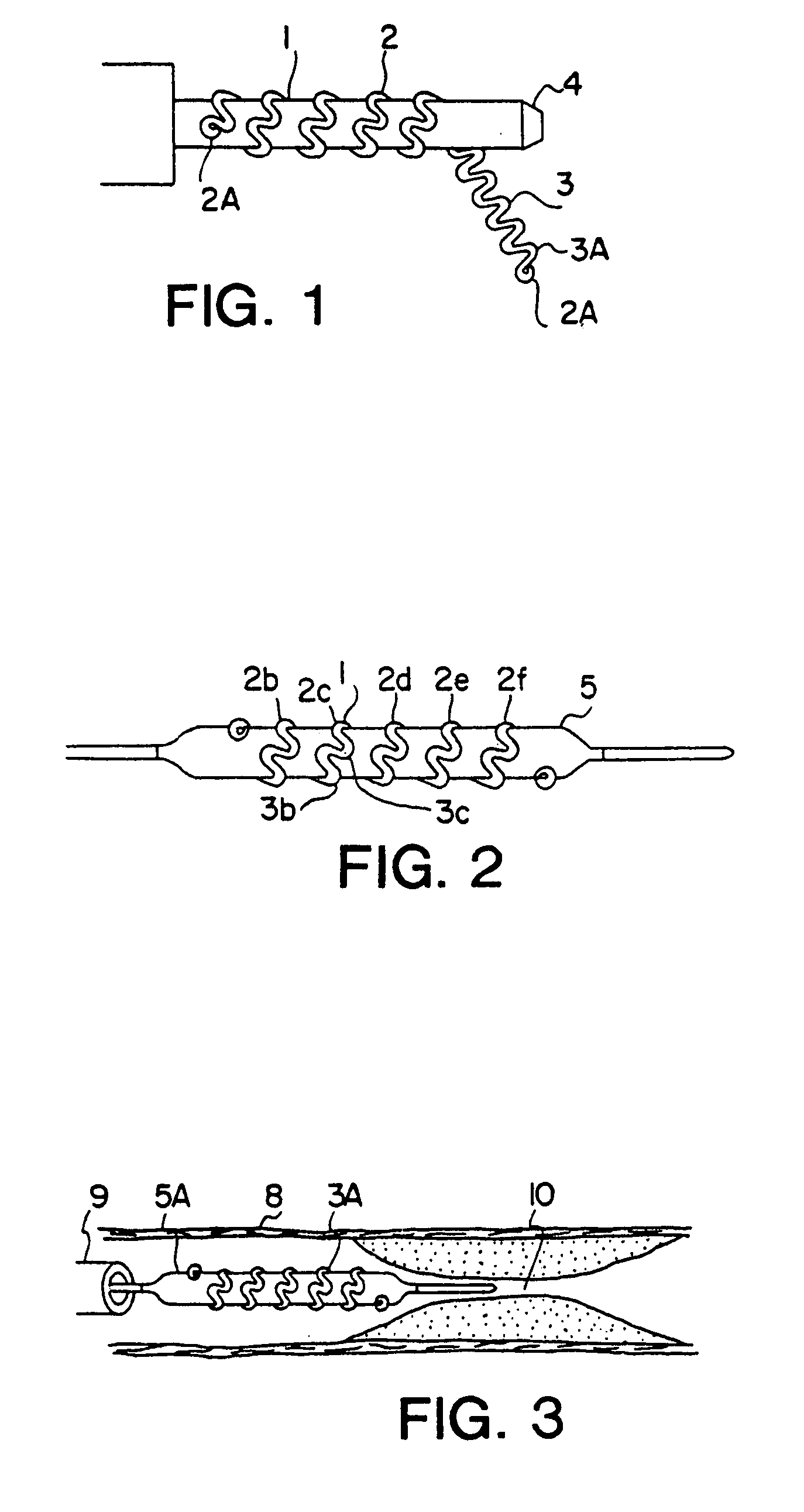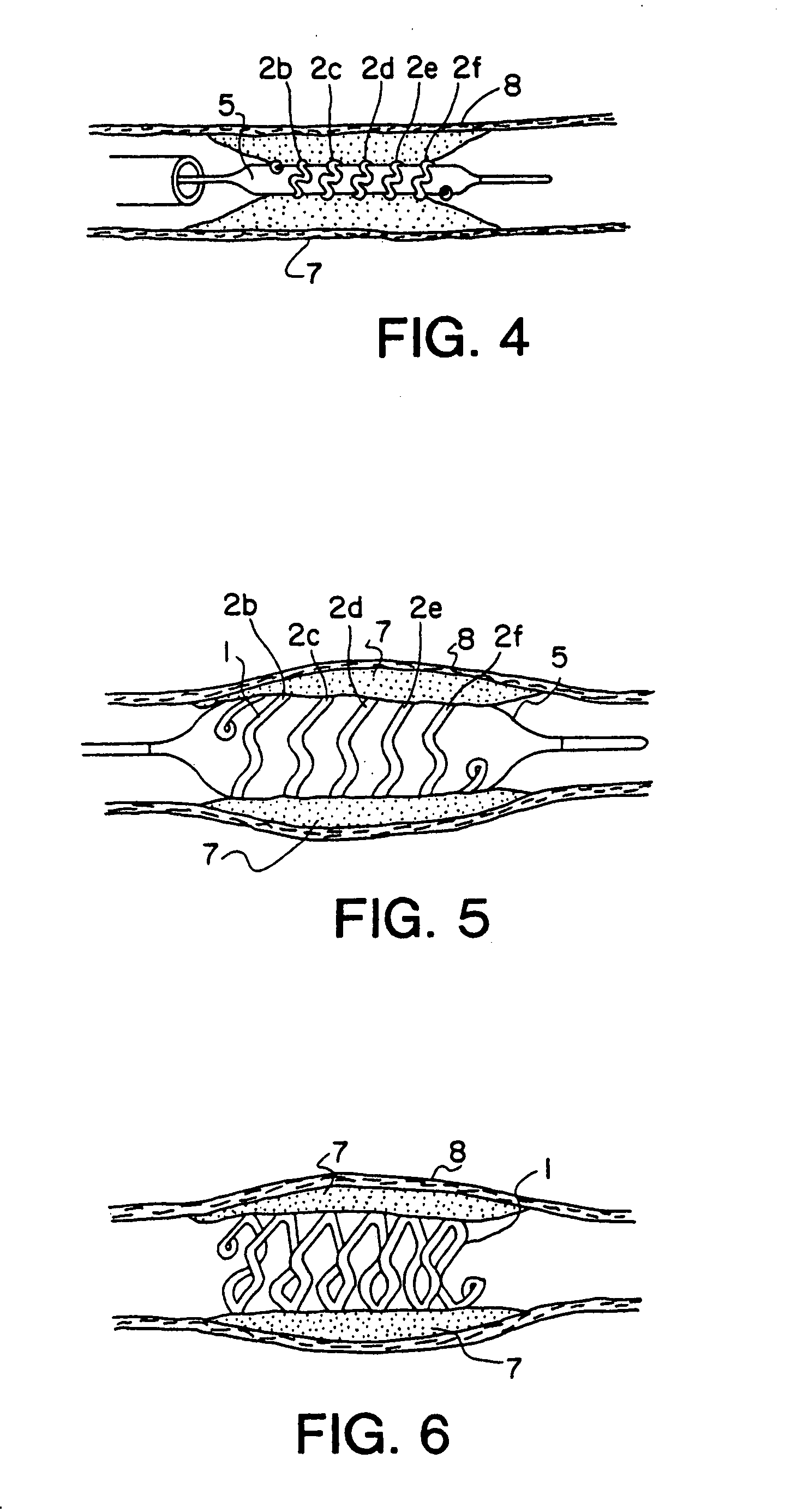Intravascular stent
a technology of intravascular stents and stents, which is applied in the field of intravascular implants, can solve the problems of considerable complexity of procedures, blood coagulation and possible thrombosis, and some turbulence in flow, and achieves low profile, small frontal area, and low memory level.
- Summary
- Abstract
- Description
- Claims
- Application Information
AI Technical Summary
Benefits of technology
Problems solved by technology
Method used
Image
Examples
Embodiment Construction
[0049]For purposes of better and clearer understanding of this invention, reference is made to FIGS. 1–6. The preferred embodiment of this invention is shown and described in an application for angioplasty; however, it is understood that other applications not specifically mentioned herein are ossible and no limitations in scope of this invention are intended or implied without departing from the basic principles of this invention.
[0050]FIG. 1 shows the details of construction of the prosthesis stent 1, hereafter called stent, which is basically of a hollow open-ended cylindrical shape. Stent 1 is basically a tubular shape of coiled preformed wire band typically wound on a suitable mandrel 4. The wire is made of drawn low-memory level material such as stainless steel, titanium ASTM F63-83 Grade 1 or high carat gold K 19–22. Copper alloy typically 110 when properly coated with polyester or Teflon® can also be used. Titanium and gold are biologically compatible and inert and requires ...
PUM
 Login to View More
Login to View More Abstract
Description
Claims
Application Information
 Login to View More
Login to View More - R&D
- Intellectual Property
- Life Sciences
- Materials
- Tech Scout
- Unparalleled Data Quality
- Higher Quality Content
- 60% Fewer Hallucinations
Browse by: Latest US Patents, China's latest patents, Technical Efficacy Thesaurus, Application Domain, Technology Topic, Popular Technical Reports.
© 2025 PatSnap. All rights reserved.Legal|Privacy policy|Modern Slavery Act Transparency Statement|Sitemap|About US| Contact US: help@patsnap.com



